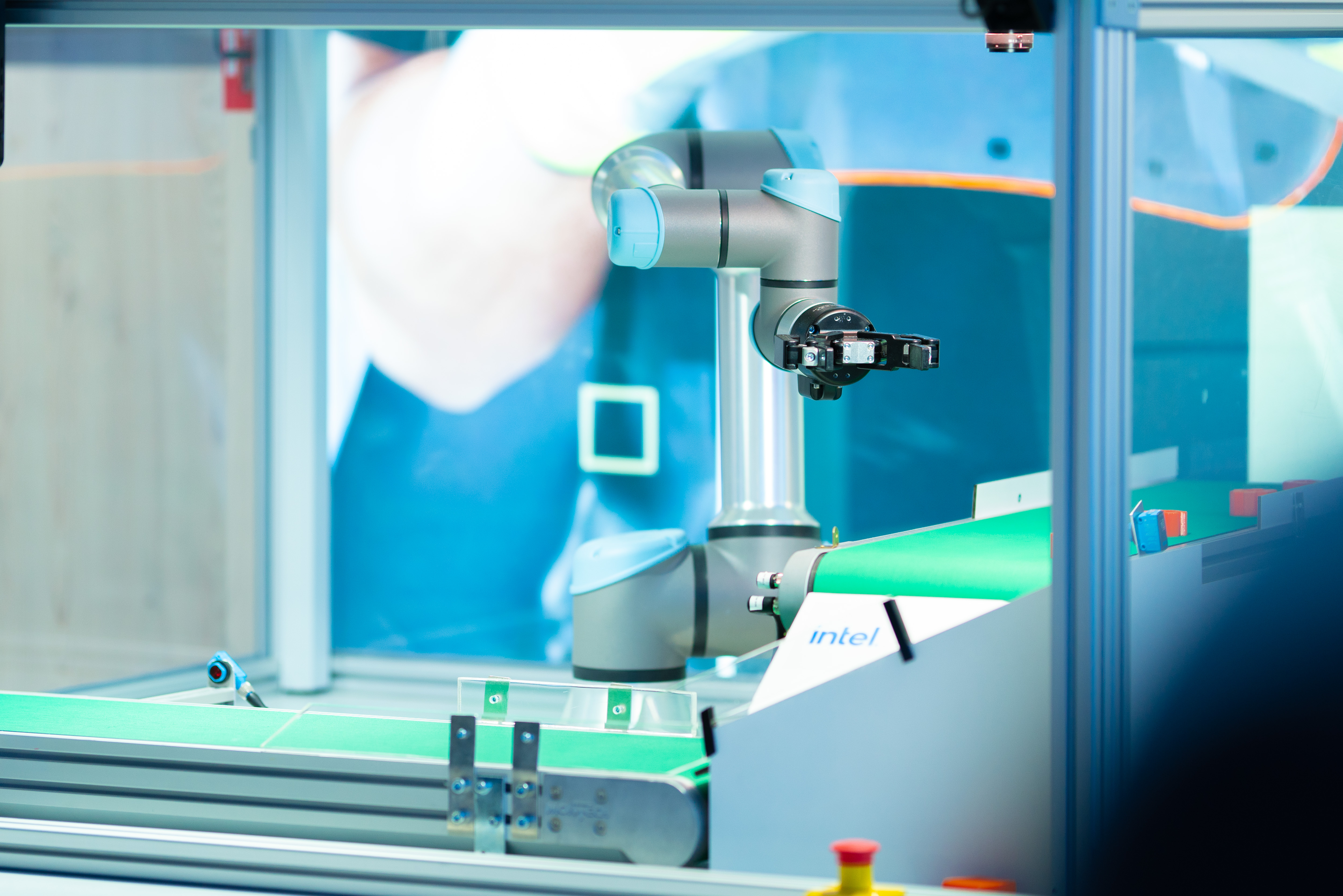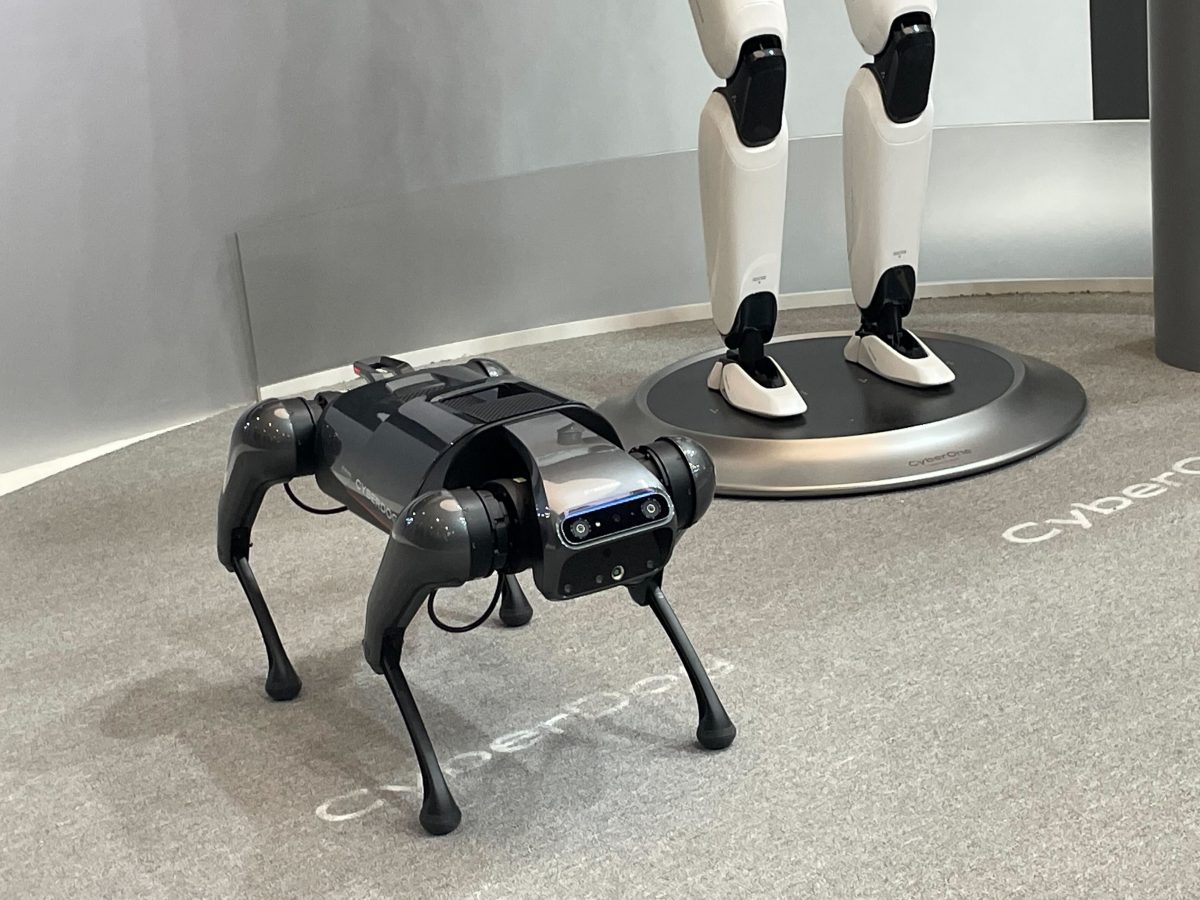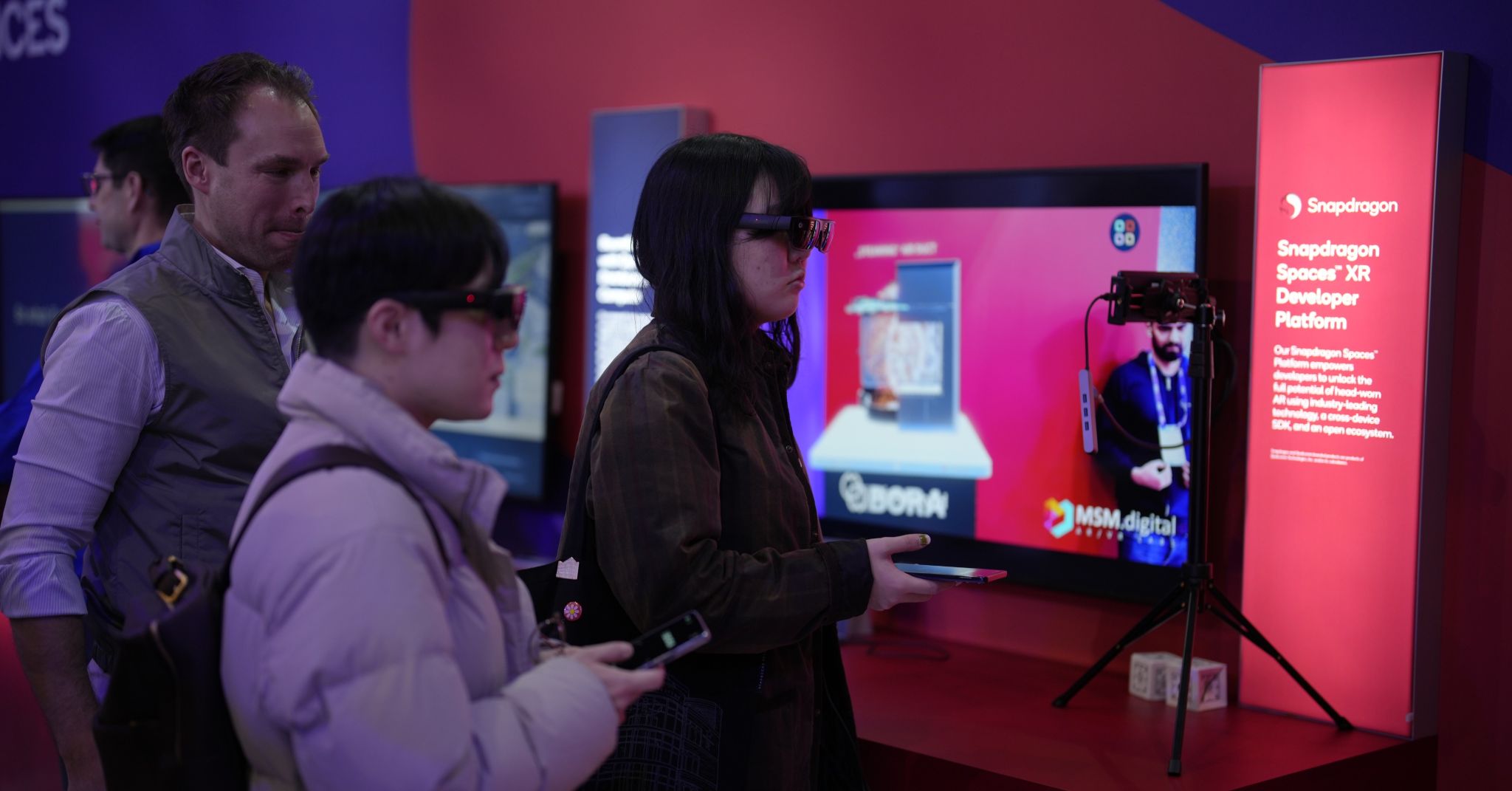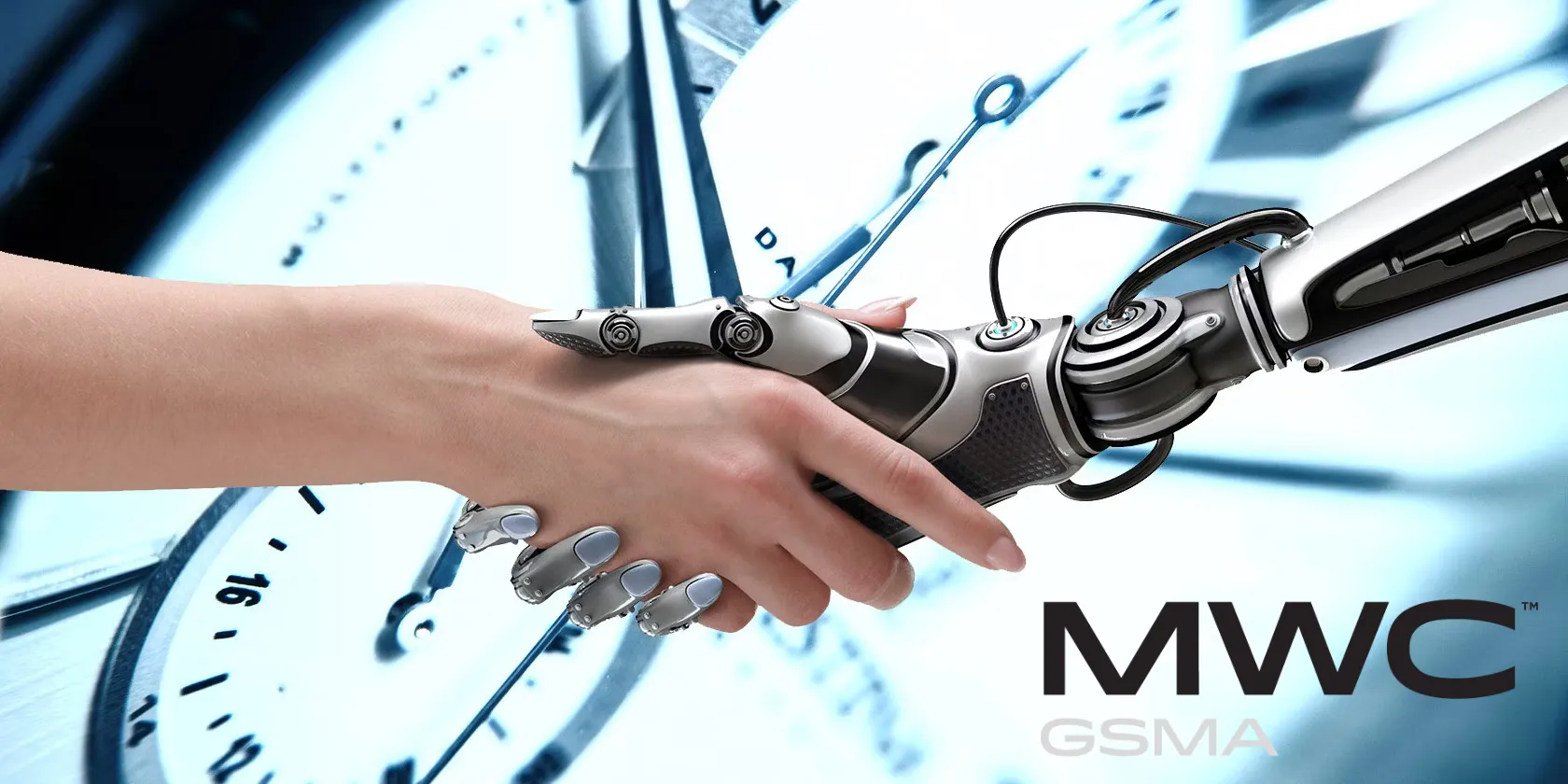What did MWC 2023 tell us about the future impact of AI on brand experiences?
Agency Partner and ECD, Andy Sexton, describes his observations from MWC 2023 on how AI will shape and influence the future of brand experiences and activations - as published in New Digital Age.

MWC 2022 was a prototype really, a post-Covid test of the fidelity and fragility of in-person mega-events. This year, however, was ‘proper’, with attendee numbers back near 90,000 and barely a mask in sight – but how did AI feature this year, and what did we learn about the future of AI and mobile interactivity, from a brand experience perspective?
AI is everywhere. Making shopping experiences easier, search more meaningful, entertainment more curated and automating an increasing amount of our everyday ‘shallow work’ tasks. Virtually all of our modern-day interactions with brands are shaped by AI on some level. And, given the colossal hype and cultural fascination with ChatGPT, Midjourney (plus, the very recent launch of Google Bard and Microsoft Copilot) and many other end-user focused productivity tools, it was a surprise how little AI technology was on show at this year’s MWC.
Spot the difference.
Pervasive, omnipresent and invisible. Amongst its many other benefits, AI allows organisations to gather information, interrogate human behaviour and act immediately on insights to enhance experiences. It’s a means to develop bespoke communications and assess their effectiveness in real time. A way to classify and comprehend interactions with a powerful level of contextual awareness. A way to identify influences and trends, as well as content that resonates, empowering brands to build awareness, advocacy and ultimately, adoption among their target audiences.
It’s fair to say that just like 5G, AI is now ‘table stakes’ for the wider mobile industry and there’s actually very little to differentiate the innovation and posturing between any of the major networks, service providers, manufacturers or SaaS businesses. The really compelling case studies and stories on show this year were in deep industrial segments, manufacturing and smart (yawn) cities.

Contextual awareness.
A pillar of modern technology is being responsive – knowing our location, heart rate, and habits, to better guide us. Without information that helps contextualise things, there’s really no ‘intelligence’. Many currently deployed AI systems leverage a form of ‘conditioning’ to learn (fast) from a multitude of inputs, and in this field MWC was rich with industrial innovation that shines a light on how tomorrow’s enterprise tech will influence and enable so many ‘consumer’ experiences.
Qualcomm demonstrated how AI-enabled communication tools will improve positioning precision and high resolution sensing. By using machine learning algorithms to analyse data from multiple sensors, including cameras, lidar, and radar, Qualcomm has shown how its technology can identify objects and obstacles more accurately and quicker than traditional methods. This kind of technology will allow brands (and experiences) to be hyper-localised to individuals, enabling a higher level of personalisation than ever previously possible.
Visual AI tools have a wide range of applications in the retail industry, from improving inventory management and supply chain operations to enhancing the shopping experience for customers. Facial recognition reduces friction and increases security by swiftly identifying and authenticating customers – AKA a faster and more streamlined check-in/purchase experience. Retailers can also use visual AI tools to recommend products to customers based on their purchase history, browsing behaviour and preferences. By analysing visual data from cameras and sensors, retailers can identify patterns in customer behavior and provide product recommendations that are tailored to individuals.

Intelligent mobile robots.
AI systems were most prevalently demonstrated through robots. The likes of (beautifully re-branded) Nokia who displayed mobile robot arms which operate using the edge cloud, allowing them more autonomy to undertake hazardous or repetitive tasks.
Intel showcased robotics which leverage an industrial 5G private industrial smart factory using a virtual 5G RAN and a distributed edge cluster. The robots empower warehousing and manufacturing businesses to stay competitive by enabling process automation that helps increase productivity, enhance worker safety and improve product quality.
Cyberdogs who respond to petting, humanoid robots that can identify 45 human emotions, AI driven robotic baristas and tea makers, robotic surgeons and security guards – MWC 2023 had them in all guises.

Convincing conversations.
AI has become an inherent part of daily life – in particular Chatbots, which are now equipped to act as personal assistants, advise us on health and wellbeing, provide education and learning, and even act as an entertaining ‘buddy’. Chatbot technology can be used to give automated customer service quickly and efficiently. Predictive analytics can be used to create more bespoke experiences, seamlessly adjusting to user preferences to provide targeted and hyper-personalised content recommendations.
New design realities.
XR, MR, AR, Metaverse – whatever moniker you give to immersive digital experiences, it’s clear to see that these ‘new realities’ are still a major battleground for design and innovation. Even to this tech-savvy and time-poor crowd there is unwavering commitment to experience the latest and (not always) greatest hardware. This year’s winner, Qualcomm for their Snapdragon experience: Their HUD wearables and demos were hard to ignore. As the Virtual Reality and Artificial Intelligence markets create more opportunities, AI is helping to advance these tools (and ultimately the experiences they enable) in a myriad of ways from natural language processing, to computer vision, predictive analytics, simulation and training, and (that ever-present buzzword) personalisation.

Generative AI.
Content creation is being significantly enhanced with an increasing amount of generative AI solutions that can autonomously handle complex tasks and eliminate tedious processes – of which there are many associated with video production, 3D modelling and animation. With GPT-4 we’re clearly at/near the top of the hype cycle and entering an era of immense change. It was therefore very surprising to see how little focus the likes of Microsoft and Google placed on these end-user productivity-focused tools, given that both had hugely hyped launches in this area very shortly after MWC closed.
Wait, no POAP?
The hype cycle might have peaked for many investors, but when the most influential mobile technology brands on the planet unite to posture around the future, the complete lack of POAP/NFT experiences is either a damning sign for Web3’s, or a stark reminder that decentralisation is a terrifying concept for many big enterprises.

Final thoughts.
AI technology is evolving rapidly and promises to revolutionise the way we work, create, curate and consume content, the way we control crowds, track results and deliver real time insights. AI is going to change the way we experience everything.
MWC has always been known to set the tone and pace for the industry, where tomorrow’s trends are born and innovation is celebrated. This year, AI might not have explicitly been a major focus for many exhibitors; it was clearly a top priority for attendees, an omnipresent conversation overheard everywhere. It’s fascinating to see the ever-changing possibilities being created and reimagined in this space. And yes – if you’re wondering, AI even helped me write this article.
Let’s talk.
If you’d like to discuss a future brand experience marketing project, whether showcasing AI or not, contact us to make the most of moments that matter.
More reading:
“Live events can’t be replaced” Sarah Wiggin, VP of Sales, GSMA
Navigat/AR: Position Magazine Q&A